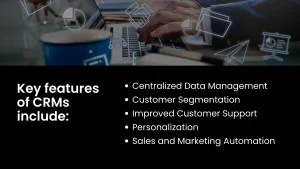Integrating Online and Offline Marketing: Expert Tips from Webugol
Establishing a cohesive brand experience that appeals to your audience depends on combining online and offline marketing channels. Online and offline brand interactions are expected to be seamless for consumers nowadays. Businesses that combine these ideas ensure consistent messaging, better brand recognition, and more customer confidence.
Siloed offline and online efforts may lead to confused messaging, disorganized campaigns, and lower customer engagement. Missed chances can result from audiences not getting a consistent and powerful brand experience that fuels loyalty and long-term success.

Why Integrate Online and Offline Marketing
A unified digital marketing strategy ensures brand messaging is consistent on Instagram, trade shows, and billboards. An integrated strategy improves brand recognition, fosters confidence, and increases involvement. It creates the perception that your brand is everywhere your target audience is, reinforcing credibility.
Improved Customer Journey
Consumers of today interact with your brand across multiple channels rather than one. They could find you on Facebook, browse your website, and buy in-store. Integration guarantees consistency across several touchpoints, therefore providing a seamless and fulfilling client experience. Brands that deliver cohesive experiences are more likely to build long-term loyalty.
Maximizing ROI
Businesses usually experience better outcomes for less money when digital and traditional marketing methods are strategically coordinated. Both channels benefit from QR codes in printed fliers that lead to unique online deals. Likewise, offline campaigns for more impact can be maximized using online data on consumer preferences.
Aligning Brand Messaging Across Channels
Strong brand identification requires consistent offline and online marketing strategies. Discordant tone or aesthetics can confound and dilute your message. Make sure the story can be adapted to suit the strengths of every media channel. Social media may tell the tale with compelling visuals, videos, or text, but print advertising can go further. Keep the message consistent and modify the presentation to each platform for a powerful audience experience.
Practical Ways to Integrate Online and Offline Marketing
Use Consistent Branding Across Channels
Keep consistent branding elements — logos, colors, messaging — in both offline and online campaigns, including fliers or retail displays. This consistency builds brand recognition and trust.
Encourage Offline Purchases with Online Campaigns
Design online advertising to inspire consumers to visit actual stores. Use online coupon codes to give special in-store discounts or promotions.
Leverage Social Media to Promote Offline Events
Create excitement about forthcoming offline events such as store openings, seminars, or product introductions using your websites. Post event details, countdowns, and communicate with your audience using online and offline marketing.
Integrate QR Codes into Offline Materials
Print QR codes connecting to your website, social network accounts, or exclusive online content on business cards, brochures, and packaging. QR codes connect online and offline methods.
Highlight Online Reviews in Offline Spaces
Showcase positive online reviews and feedback in your physical location or offline ads. This can boost customer trust and credibility.
Track Offline Campaigns Using Digital Tools
When companies use both offline and online marketing channels, they can create a cohesive consumer experience that maximizes online and offline efforts by combining these methods. This all-encompassing strategy increases participation and produces observable outcomes as well.
Tools and Technologies for Seamless Integration
Marketing Automation Platforms
Automating personalized follow-ups from online and offline encounters requires marketing automation solutions. These tools can trigger personalized email campaigns, SMS notifications, or social media ads in response to in-store purchases or attendance at offline events.
Customer Relationship Management Systems
CRMs are the backbone for connecting offline and online marketing operations and guarantee a flawless and consistent client experience. These systems integrate purchase history, website activity, and in-store visits. A consolidated database helps businesses understand client behavior, preferences, and needs, enabling more focused and personalized marketing.

Marketing automation sends timely and relevant messaging, leveraging both sources to increase consumer engagement and loyalty.
Customer Relationship Management Systems
CRMs are essential for integrating online marketing and offline marketing data. Client data from sources, including in-store transactions, internet visits, and customer service interactions, helps CRMs build a whole profile for every customer. This comprehensive view helps firms make strategic decisions by understanding customer behavior and preferences.
Marketing Automation Platforms
By automating customized follow-ups depending on both online and offline interactions, marketing automation systems increase engagement and boost conversions. These technologies let organizations send customers timely, relevant communications using CRM and other data.
Examples of automation capabilities include:
- Tailored Email Campaigns
- Cross-Channel Integration
- Behavioral Triggers
Tracking and Attribution Tools
Tracking and attribution tools help one to properly appreciate the link between offline and online marketing strategies. These tools measure how offline marketing affects internet activity and vice versa. Examples include:
- Google Analytics UTM Codes
- Trackable URLs
- Foot Traffic Attribution
These instruments help companies to improve their plans and accurately calculate return on investment (ROI) over all marketing channels.
Overcoming Common Challenges in Integration
Siloed Teams and Communication
Aligning teams is a major difficulty in integrated campaigns. Separated departments might produce inconsistent communications, lower efficiency, and lost opportunities.
To integrate online and offline marketing, share workspaces, interact regularly, and hold cross-departmental seminars.
Set marketing goals for all teams to ensure they strive toward the same goals.
Maintain team communication with project management and communication platforms.
Budget Allocation
Managing online and physical spending is crucial and difficult. Effective allocation guarantees the best use of resources where they deliver the highest return on investment.
- Pilot Campaigns
- Analyze Historical Data
- Adjust Dynamically
Businesses may design integrated, compelling campaigns that use online and offline marketing channels by addressing these challenges with strategic methods.
Measuring Cross-Channel Effectiveness
Sales and conversions in integrated campaigns are hard to attribute. Understanding overall effectiveness requires knowing how efforts in one channel complement and improve results in another.
- Adopt Tracking Tools
- Use Unique Identifiers
- Focus on KPIs
Conclusion
Developing a greater brand presence and creating deep consumer relationships depend on combining online and offline marketing channels. Businesses can convey consistent messaging, reach more customers, and create smoother experiences by integrating these tactics. By combining digital precision and offline effect, brands can develop trust, engagement, and long-term loyalty. When done right, it maximizes ROI and strengthens the brand’s market position by coordinating all marketing efforts.
Need help creating a strategy to tie your digital and traditional marketing efforts together? Contact Webugol Agency today, and we’ll craft a tailored plan to help your brand reach its fullest potential.



